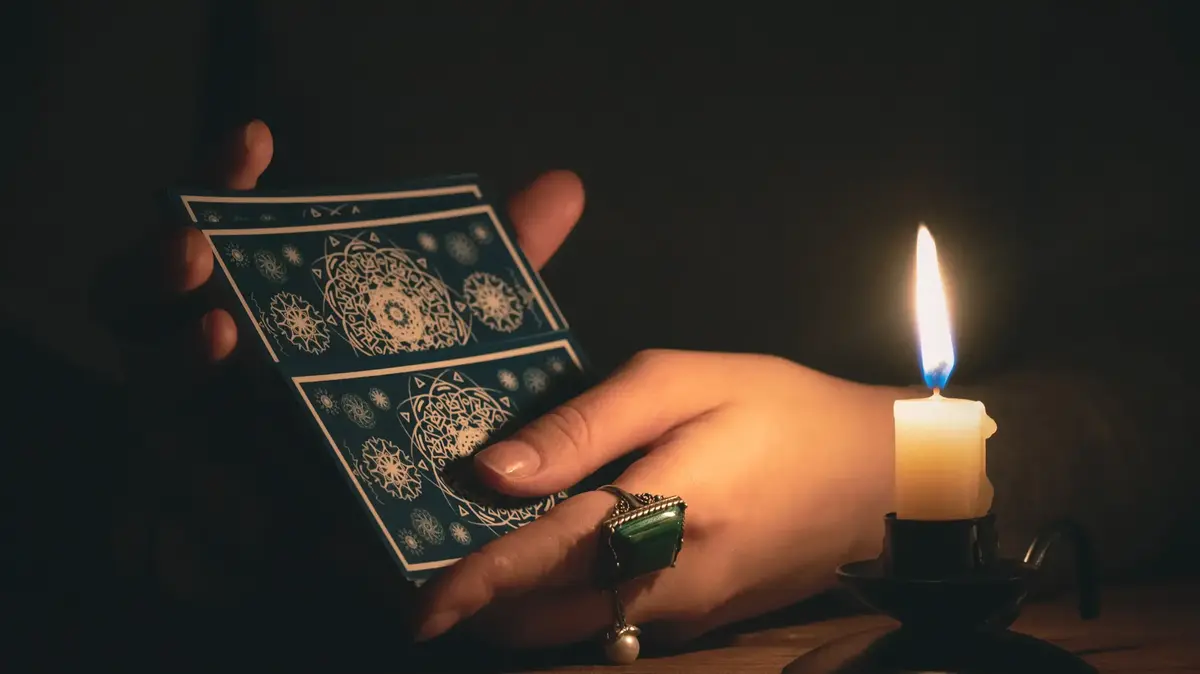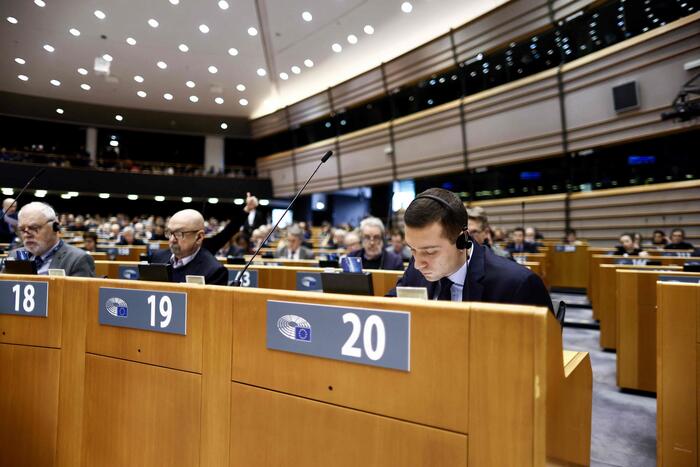Enlarge image
Let's put the cards on the table: playing together can be a good experience for teams
Photo: Fiordaliso/Getty Images
Companies are complex entities.
When you're new, you often feel like a Ludo figurine on a chessboard, at a loss as to what the others are up to and who is interacting with whom and how.
The variety of behavior options and possible interpretations of actual behavior can be stressful.
It's beneficial when you can create zones for the team where social interactions are predictable and enjoyable.
Which brings us to the topic of board games.
They offer a setting in a protected space in which hierarchies are leveled for a while.
»You learn to trust each other because you have seen that the other has followed the rules.
That creates a community,” says business IT specialist and game expert Thomas Voit from Nuremberg Technical University.
But the positive effects can go even further.
"The next step is to reflect on the knowledge gained from playing together as a team and to transfer it to the real world." With The
Mind
, for example , one can experience how each team's own time cosmos unfolds, and this knowledge as "emotional Use anchor point«.
In this game you are not allowed to speak - and you have to place number cards one after the other in ascending order without knowing which cards the others have.
This creates a common sense of time that has a very unifying effect.
"A discussion about different gaming preferences can be a good starting point for a conversation about how everyone on the team can work better together," says Voit.
However, it is a misconception that the best thing to do in a team is to bring cooperative games to the table in which the group wins or loses together.
"It's games like this that can create a lot of pressure - because the success of the entire team depends on your own actions," says Voit.
But playing can also be a borderline experience.
»In the game, all roles from the real world are eliminated – hierarchies are leveled out, you are on an equal footing.
Some executives are downright afraid of it.« Those who get involved will be rewarded with experiences that also have a beneficial effect on professional interaction.
Here are three formats in which gaming can be good and meaningful.
Level one: game aperitif before the meeting
Well, everyone there?
And everyone awake?
OK, right?
It can be worth starting a meeting with a short impulse that activates everyone.
It would probably be good if everyone did a few push-ups or squats together, but the inhibition threshold is relatively high.
Start your meeting with a round of
lucky salmon
- it takes minutes and wakes you up mentally and physically.
The 72 cards are in a stuffed fish, you can play it with up to six people.
Everyone gets twelve cards face down, on command everyone turns over the top one and tries to find a partner whose card shows the same symbol.
You then perform the action - checker fist, high five, hand wave lucky salmon, or switch places - and move on to the next card.
Whoever gets rid of all the cards first wins, but actually the game is a total end in itself.
An additional rule is also fun, with which the turbulent card partner search runs completely silently.
A round of
The Mind
or
5 Minutes Dungeon
can also be a good start to a constructive meeting - especially since everyone can only win together.
More about that here.
If you need a haptic balance to cerebral activities, play
Team 3
or
Ranklotzen
(which is available in a four- and a six-person edition);
both are building games that require good coordination.
In
Team 3,
three players always work together.
One has a construction plan, but is not allowed to speak, only gesticulate, the second person then has to give instructions to the third - and the third builds the required structure blindfolded.
With two boxes, two teams can compete against each other.
In
Ranklotzen
you build colorful towers out of pretty wooden blocks over time - alone or in a team, here too you can combine different types of cooperation with various handicaps.
Fast-paced games like
Just One
or
Krazy Wordz
, which stimulate the language center and create a constructive atmosphere, set the mood for creative meetings.
Reaction games like
Taco Cheese Goat Pizza
wake you up even after the lunch break.
Rounds with colleagues who don't know each other well yet benefit enormously from
fun facts
- a playfully extended round of introductions.
More about that here.
Sometimes it doesn't even have to be a full game.
Voit has had good experiences using individual mechanisms from board games in everyday work.
For example, a rule from the cooperative
Bermuda,
which is already a few years old : the players may only discard cards for as long as all of them can hold their breath together.
“We adopted that for introduction rounds – there are often people who get a little more rambling.
We then have the rule: You can only talk as long as the next person in the group can hold their breath.«
Or, although this is already at the expert level, one distils a benefit sharing for research releases from a game rule: “The Matthew rule often applies here: whoever has, will receive.
In our faculty, we have introduced the rule that the more you already have, the more difficult it is to get more of the tight pie - such as in »Settlers of Catan«, where the robber punishes those who have many resources feature.
In this way, those who are just beginning their research also have a chance,” explains Voit.
Level two: The mini team event
Of course you can sit down in the coffee kitchen and talk about the incompetence of the management or the adversity of the weather.
But it can also be an invigorating impulse to shake a mini team event for your colleagues out of the blue.
This can be low-threshold - for example, by having a lunch round together around a game like
Get caught
or
Don't get caught!
expanded, in which you have to fulfill secret tasks on the side - and score if you weren't caught doing it;
or if you find out what other tasks they probably had.
This can be something like “tell someone what you would do with a million dollars” or “get someone to use your smartphone”.
If the game itself is to play the main role, Magic Maze,
the action game
Top Ten
or the
pub quiz
(besides the ones already mentioned) are suitable
: Here everyone competes together and, as a team, experiences how helpful it is when everyone can contribute knowledge from different fields – one knows about football, the other about geology.
New areas of connection often become visible.
In
Magic Maze,
four people take on a cooperative task - and are not allowed to speak to each other while they work on it together.
An icebreaker.
That's not a Hat
is like
The Deadlies
a fine, small deck of cards that thrives on mutual annoyance.
Tough calls
or
Silicon Valley startups
can work well
in groups that are open to debate .
In the first, all participants present solutions to post-apocalyptic problems (we help the rest of humanity survive), in the second we have to think up and pitch business models at lightning speed - it's great fun, especially in teams that actually do something like this.
And the brain doesn't care whether you learn your presentation skills in a real setting or while playing.
The less the stakes are, the easier it is to experiment and take what you learn into real life.
Level three: The game night in the company
Most employees now prefer a hybrid work design: sometimes here, sometimes there - home office, workation, mobile work and now and then an office.
Events that bring the workforce together are becoming increasingly important.
It's not that easy if there's not much attraction in the company and if in doubt you'd rather skip the commute.
What is needed are pull effects: For example, a game night that is organized as an event in the company.
But it takes a few things to make it work.
The setting:
enough tables – one for each game.
Sufficient lighting.
Good information.
Due to a lack of personal experience, many adults do not know how versatile board games have become, only think of Monopoly and Ludo and understandably have little interest in them.
That's why background information belongs on the intranet: What kind of games are on the table?
Arouse curiosity, show pictures!
And what's on the fork?
Snacks and drinks are important - and if the evening lasts longer, an uncomplicated meal together in between, such as pizza or sandwiches.
A game night should be as accessible as a low-floor bus.
Just no hurdles.
No registration.
Set a starting time, from then on anyone who wants can come and stay as long as he or she wants, and also join later.
Feel plays an important role: set up the games before the start of the evening so that you can start right away.
Stacking games like
Men at Work
or the new
Block and Key
arouse curiosity just because of the material, as does
Project L,
with which you have aesthetes on board right away – and
Total Regal
, which is also very inviting.
Even older games like
Ubongo 3D
can awaken the desire to play.
Because people are most interested in other people, lines of sight are good: the tables shouldn't be too close together so that you can join other players and kibitz.
Not everyone likes party games where you have to pantomime something or otherwise feel exposed to a lot of looks in a large group.
However, there are many games that also appeal to more introverted people – tile-laying games such as
Cascadia
,
Dorfromantik
or
Framework
are inviting right from the start and harbor the satisfying feeling of meaningful order.
Good games:
The evening is doomed to fail when there is a stack of boxes on a table and the respective round has to laboriously eat through the instructions.
Every game that comes to the table needs an explainer.
Large, complex strategy games are usually not for an open round - colleagues should rather make specific appointments for this.
There are some party games that are a safe bet - these include games like Just One
or
Fun Facts
already mentioned
, but it can also be more lavish.
The
Challengers
game , for example, offers a complete tournament structure for up to eight players who compete against each other with their own decks of cards.
Sounds complicated, but once you understand it, you can quickly explain it.
Ready Set Bet
also
offers a real atmosphere.
Up to nine people try to get rich in the dice horse race - rousing fun where an extroverted colleague can make the sports presenter (but doesn't have to, you can also delegate to an app).
Feed the Kraken
is also going to be turbulent
;
here a large crew made up of sailors, pirates and cultists sets sail together and tries to cleverly unmask each other.
This is an intense experience, but only works with good guidance.
The music card game
Hitster
, in which you have to put the songs played via an app in the correct chronological order, is a good way to end the day.
Since it makes playing at the next tables more difficult because of the volume, it is more for the hard core, which is still there at the end - and will keep the evening in good memory.





/cloudfront-eu-central-1.images.arcpublishing.com/prisa/BK447KFD377OL5TFUXD6UJMFIM.jpg)




/cloudfront-eu-central-1.images.arcpublishing.com/prisa/DIAGMBIFCBFTJADD5SB7GXXY2A.jpg)


/cloudfront-eu-central-1.images.arcpublishing.com/prisa/7FWSL2MJ4FD5TOM366ZNU2RLTU.jpg)

